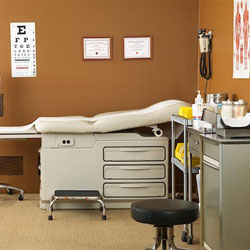JOB BOARD
Career Transitions
- En Route to Retirement
- Alternative Practice Models
- Tips for Closing Your Practice
- Other Resources
Slowing Down or Retirement Options for General Surgeons
NOTE: Below is a summary of Dr. Frank Baillie's (McMaster University) presentation on "Transitioning for the General Surgeon" during the 20th OAGS Annual Meeting in 2014.
REASONS TO SLOW DOWN:
- Freedom to Choose – No “On-Call”
- Choice to pursue personal interests (i.e. grandchildren, travel, hobbies, sports, higher education in other areas, etc.)
- Absence of deadlines, stress & responsibilities
- No Malpractice or Hospital Irritations (charts etc.)
- No Bureaucracy!! ...or at least less
SURGICAL OPTIONS:
- Scope Jockey
- Lumps & bumps – OHIP &/or Cosmetic
- OR assisting with call (Cardiac Obstetric or Community etc.)
- OR assisting without call– any discipline
- Remote/Rural Locum work
- Volunteering Abroad
- Teaching
- Surgical Consulting
MEDICAL OPTIONS:
- WSIB Consultation
- Medico-Legal Consultation
- Insurance Industry Consultation
- Administration & Leadership
- Coroner - Call & paperwork challenge
- Police Surgeon
- Palliative Care Practitioner
- Walk-In Clinic - consultation & procedures
- Emergency Medicine –Scope of Practice change and either in very busy ER as the in Dept surgical assessor & stitcher or remote community fly/drive
- Family Medicine
- Run a Nursing Home
- Ship Surgeon or Doc - cruises
NON REMUNERATIVE ACTIVITY:
- Bridge
- Golf
- Curling
- Any sport that one can tolerate
- Volunteering – 77% do something (and 45% of that is Medicine-related such as Speaker for injury prevention, cancer etc.,) Driver for Cancer Society, Meals on Wheels, Rotary, Trustee Work & Politics
 Practice Delivery Models for General Surgeons*
Practice Delivery Models for General Surgeons*
The OMA summarizes several main practice models:
- Collaborative and Interdisciplinary Team Models - These teams are led by specialists.
- Specialty Clinics, Specialty Hospitals Models - These models are designed for patients with particular conditions (i.e. Independant Health Facilities - IHFs)or for specific patient populations
- Comprehensive Integrated Models - These include care by both specialists and general/family practitioners across the healthcare spectrum
Physician Remuneration Models**
- Fee-for-Service (FFS) - price of each service is listed in the OHIP Schedule of Benefits and Fees. This model is widely used by specialists and can be blended with other incentive plans or APPs.
- Salary / Capitation / Benefits - Academic situations possibly blended with specialist FFS.
- Alternative Payment/Funding Plan (APP/AFP)- This is sometimes a non-FFS, but most agreements are blended models that combine a base rate, incentive/premium payments and possibly a FFS component payment. They are contractual arrangements between the MOHLTC and a group of physicians, and may include other organizations such as hospitals/universities. Some AFPs/APPs also include funding for teaching and research. They are utilized mostly in specific communities or under-serviced specialties.
- Northern Group Funding Plan (NGFP) - A version of APP which primarily pertains to Northern Ontario groups with salary and incentives.
- Northern Specialist Alternative Payment Plan (NSAPP) - An APP on an individual basis in Northern Ontario.
- Hospital OnCall Coverage Program (HOCC) - Established only in 2000, the Program is funded and administered by the MOHLTC to facilitate the provision of after-hours on-call services at eligible acute care hospitals. The HOCC Program provides incentives to physicians for the additional burden.
*Health Force Ontario
**UofCalgary School of Public Policy, Vol 7,Issue 11, April 2014; Ontario Medical Association , OMA Principles and Recommendations: Models and Processes of Delivery for Specialty Care October 2011.
Tips for Closing Your Practice
 If you're thinking about retirement or a move of some sort, you should give yourself a considerable window of time to do so. You likely have a large slate of patients and will need to consider continuity of care. If possible, finding a replacement for them would be ideal. If you're a solo community surgeon, this might seem daunting. You'll have to start thinking about a succession plan. And what about your office space, employees, records, equipment, furniture, electronics, etc.? It will definitely take some time and planning to extricate yourself, but no need to be overwhelmed. There is lots of help out there to advise you:
If you're thinking about retirement or a move of some sort, you should give yourself a considerable window of time to do so. You likely have a large slate of patients and will need to consider continuity of care. If possible, finding a replacement for them would be ideal. If you're a solo community surgeon, this might seem daunting. You'll have to start thinking about a succession plan. And what about your office space, employees, records, equipment, furniture, electronics, etc.? It will definitely take some time and planning to extricate yourself, but no need to be overwhelmed. There is lots of help out there to advise you:
OMA - Winding Down a Practice: A Guide for Physicians
OMA - Seminars for Retirement Planning
CMPA - Winding Down Your Practice
Here are a few tips to consider before embarking on the journey:
1. Start Looking for Potential Replacements
If you are a solo practitioner but have been mentoring General Surgery residents during clinical rotations at your hospital, would they be a good fit with your practice? How about locum surgeons during your vacations. Is there any interest there? How about using a physician job listings service: HFO, OAGS, etc.
2. Consider Seeking out a Group Practice
If you are not having any luck finding a replacement on your own, perhaps consider joining a group practice in the final years. There are likely more things you need to be aware of when shutting down a practice than if you were part of a group. If you seek out a group operation, there’s a better chance that a good portion of your assets and patients will be delegated.
3. In a Remote Setting and Still No Luck?
The CMPA advises physicians to inform regional health authorities well in advance to try to assist in the development of a suitable plan.
4. Manage your Communications
When you've made your final decision, it's important that your patients find out at the same time. Think about sending out a personal letter to all of your patients so they find out in writing initially, rather than through the rumour mill. In this way, you can allay their fears that there is a plan for a successor or else it will give them time to find another specialist. It's also important to inform the following: colleagues, referring physicians, partners, hospitals, specialty medical centres/clinics, professional organizations/associations, CMPA, local pharmacists, and any other gov't/research/healthcare organizations with which you might have a contract.
5. Go Digital
If you’re trying to attract a successor, especially in an under-served part of the province, having well-organized records is essential. Old paper charts may have obsolete results. You might need to start reviewing chart contents that are relevant to patient histories. Regardless of what your plans are, it is worth getting these files into an appropriate electronic medical record system.
6. Record Storage
Refresh your memory about your legal responsibilities for storing patient files. Physicians must ensure that records are stored in a safe and secure place. Paper files will need a secure physical storage facility. If you've converted your files electronically which are already stored electronically online with an EMR (electronic medical records) system, the physician will continue to be responsible for maintaining the security of the records in accordance with applicable privacy legislation and College requirements. Occasionally, a patient will ask that the file be sent to the new physician or that it be given to the patient who can in turn take it to the new physician. However, an office clinical record made by you is your property and you may need it later if your professional work or care for the patient is called into question. As a general practice, it is recommended that you not let the original files out of your control.The College recommends record retention of 10 years after the last entry or 10 years after age of majority (age 18) in Ontario. (CMPA; CPSO)
7. Make sure your Office Administrators are in the Loop
They can be your right hand in your transition, and you'll be giving them time to start preparing for their own transition as well.
8. Do as much as you can for your patients, but not more
Most physicians feel a deep and personal responsibility to make sure patients find appropriate care. After you’ve done all you can, don’t dwell on the fact that you haven’t done more.
9. Getting out of the deep end and toweling off altogether or linger in the shallow end/at poolside?
What will you do when you retire? Will you completely give up your medical license or continue to dabble with a lumps and bumps clinics, do locums, or assist in OR from time to time? Now is the time to start thinking about what you'd like to do after a long and successful career as a General Surgeon.
10. Letting Staff Go - MedicoLegal Issues
Consider direct and indirect costs, assess other solutions, know the law, give staff notice or pay in lieu of notice, and finally...talk to a professional - your lawyer. See Medico Legal.
Sources: The Medical Post/Canadian Healthcare Network, OMA, CMPA, OMA Thinking About Downsizing...Before Letting Staff Go - Vol2, Jan2013
Other Resources
CBC: The Current
The doctors are in: Debating mandatory retirement, June 2015 (Site; Download Stream)
The Globe & Mail
Succession Planning: Why is it so hard for doctors to retire?, January 2015 (Download Article)
The Province
Time to hang up the stethoscope? Aging doctors prompt call for competency tests at AMA meeting, June 2015(Download Article)